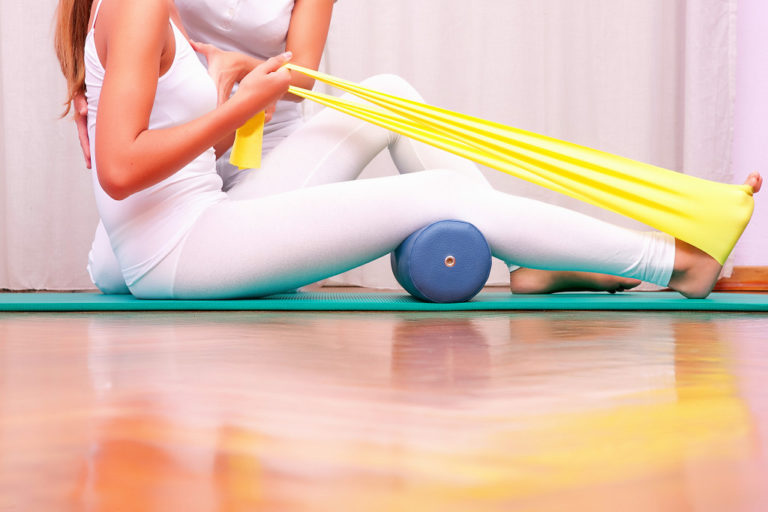In ancient times, way back between 24,000 BC and 22,000 BC, the idealized woman was nothing like the Instagram models we know today. At that time, women were believed to have thick waists, large breasts, and absolutely no thigh gaps. Such an image was the paradigm of fertility back then.
Today, that would’ve still earned praise, considering the body shape’s realistic look. But women’s body shapes were always attached to fertility back in the day. The wider and rounder the hips, the more fertile she appeared, and therefore more attractive. Now, we can say that the “perfect” body shape has diversified, and fertility is no longer treated more superior. However, with the Kardashians and Jenners showing off their apple hips and ant waists on social media, it can be hard to believe that we’ve progressed positively.
In this article, we’ll look through the ideal body shapes for women through the years and see if the standards have really gotten better.
Paleolithic Era
As seen on Venus of Willendorf, the body type considered beautiful during that period was on the heavy side. The face wasn’t depicted on the figurine; only the body mattered because it was a survivor era, and ample nourishment was the key to survival.
The figurine might’ve exaggerated what women actually looked like in the Paleolithic era, but it proved that “voluptuous and well-nourished” were the ideal body characteristics of that time.
Ancient Greece
The ideal woman of Ancient Greece had generous hips, full breasts, and a bit of a pudgy stomach. But that’s not all; the ancient Greeks also nailed down the so-called math of attractiveness. Plato endorsed the “golden ratio,” the bar by which women’s beauty was subconsciously judged. But instead of Plato, it was actually the Pythagoras who defined what the golden ratio should be. Apparently, a beautiful woman’s face should be two-thirds as wide as they were long, and both profiles should be perfectly even. As nitpicky as that beauty standard sounded, even or symmetrical faces, in fact, continue to be glorified today. It’s not really a body shape, but the shape of your body can influence the shape of your face, so that makes sense.
Early Renaissance
If you thought the past eras only admired modest women, that wasn’t the case in the Early Renaissance. The artists of that era deviated from the modesty and strict religious values of the Middle Ages and started painting women with bare breasts. Their art symbolized fertility and sensuality.
The idealized body back then was still on the curvy side and the face shape round. But from being objects of fertility, women became objects of lust and beauty in this period.
Victorian Era
Three centuries later, the hype over curvy bodies dwindled. When the Victorian Era began, the pale, frail, and weak look was the epitome of beauty. No body part was particularly objectified; as long as women didn’t look too hearty or strong, they were considered more desirable. This beauty standard favored dominant males who preferred submissive women.
The 1890s: The Turn of the Century
Thankfully, the sick and frail look lost its appeal in the latter part of the Victorian Era, making way once more for large busts and round shapes. Corsets were the norm in that period, so waists were compressed, and the buttocks were emphasized. But this standard, just like all the other ones in the previous eras, was also made up by a man.
The 1920s
This was a war era, but women started having more rights in this period. As such, the ideal body gravitated toward a more masculine type, and the curvy, fertile look was thrown out the window. However, this era sparked the glorification of thin bodies.
The 1950s to Early 1960s
Like the time when Marilyn Monroe rose to stardom, her hourglass figure instantly became the ideal body shape. However, thin bodies were still prevalent in this period, and curvy women were considered plus-size despite looking like Marilyn Monroe.
The 1990s to 2000s
Magazine cover girls were the symbol of beauty during the 90s and the early 2000s. A slender physique, sharp and high cheekbones, angular nose, full but not thick lips, and blue or green eyes were the ideal physical characteristics. Meanwhile, women who didn’t possess those traits were considered exotic or less desirable. Heavier women and people of color were particularly disadvantaged.
The 2010s to Present

Though the Kardashians and Jenners have the ideal body shapes today, female influencers are now stepping up to show what a realistic body actually looks like. Clad in their yoga attire or edgy powerlifting clothes, influencers show their stomach flabs, flat chests, and other physical traits outside the ideal type. Though the media may never stop promoting ideal types, at least, we’re now spreading the message that you don’t have to be “perfect” to look beautiful.
So even if you don’t look like a celebrity, your shape and size are still beautiful. No one, man or woman, can tell you otherwise.

